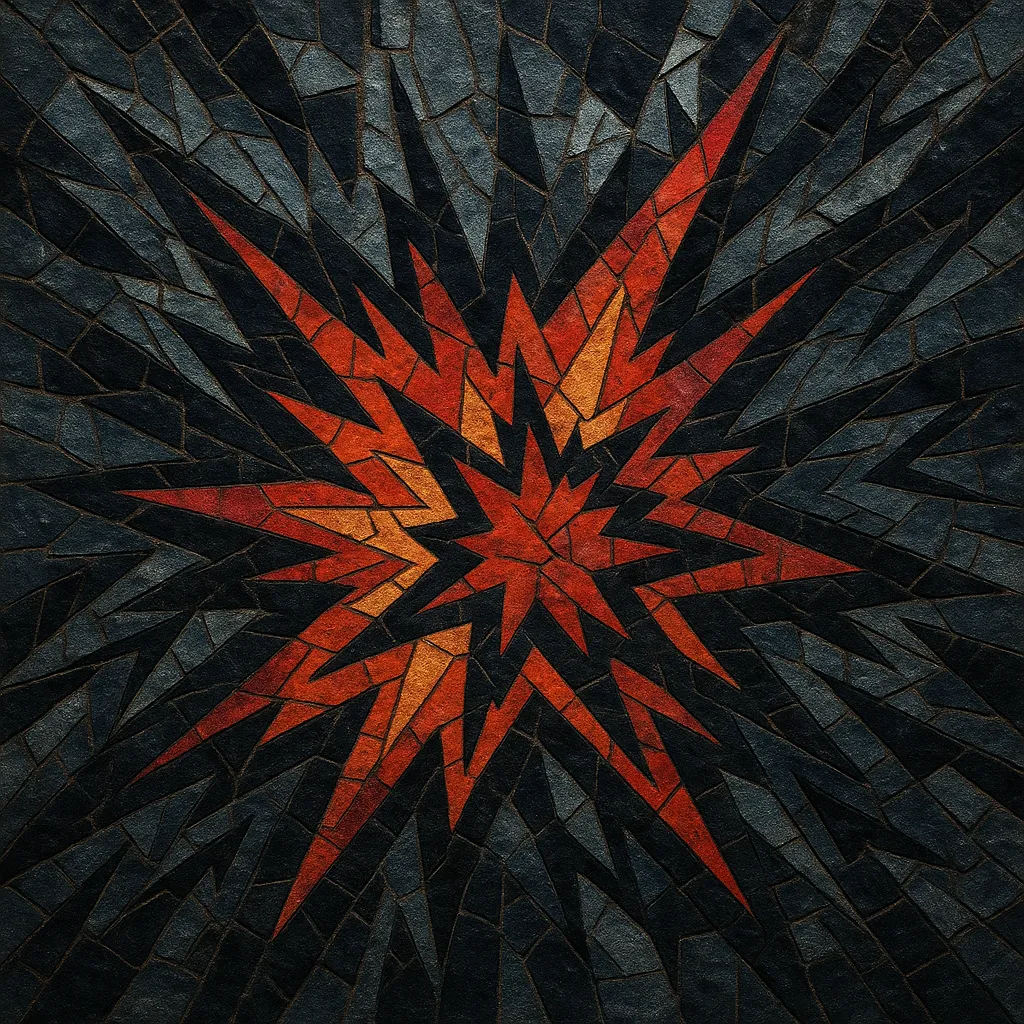Splittercore is an ultra-extreme offshoot of speedcore characterized by blistering tempos—typically 500–1000+ BPM—and relentlessly clipped, staccato kick drums that sound like rapid-fire bursts. The name reflects the signature “split” feeling of ultra-short, overdriven kicks that carve through the mix like shards.
Tracks are usually short, brutally loud, and intentionally abrasive, favoring distortion, bitcrushing, and hard clipping over conventional dynamics. Rhythms are programmed at microscopic subdivisions (1/64–1/256 notes and beyond), often with glitchy fills, sudden start–stop edits, and occasional breakcore-style sample splices. Melodic content, when present, tends to be simple rave stabs, shrill leads, or horror/industrial atmospheres, deployed as punctuation between kick barrages.
Culturally, splittercore grew from the gabber/speedcore party circuit and DIY netlabel ecosystems, later flourishing online via forums, trackers, and sharing platforms. It sits on the continuum between terrorcore and extratone, pushing speedcore’s velocity to its percussive limit while remaining kick-defined (unlike extratone’s tonal blur).
Splittercore emerged as speedcore producers in Germany and the Netherlands began pushing tempos far beyond 300 BPM, experimenting with hyper-short, heavily clipped kick drums and extreme distortion. Small labels, underground parties, and tape/CD-R circles incubated the sound as a distinct approach from terrorcore and mainstream gabber.
By the mid-2000s, the term “splittercore” was commonly used in Europe’s hardcore scenes to describe tracks defined by rapid, chattering kick streams at 500–800+ BPM. Producers refined techniques: multi-layered 909-style kicks driven into overdrive, hard clipping as a creative choice, micro-edit fills, and sparse, shocking samples. Releases on niche labels and appearances at hardcore/speedcore stages helped codify the style.
Community forums, netlabels, and video platforms amplified global participation. Producers from Japan, Italy, Poland, the UK, and Australia adopted splittercore’s toolkit, blending it with breakcore, J-core, and meme/sample collage culture. Tutorials and project files circulated online, accelerating technique sharing (micro-gridding, envelope sculpting, transient control at extreme BPMs).
Splittercore remains a specialized but active microculture adjacent to speedcore, terrorcore, and extratone. It thrives in niche festivals, online compilations, and producer Discords. The style continues to influence even faster forms like extratone and contributes to lolicore’s hyper-accelerated aesthetics, while new producers iterate on cleaner transient design, FM-based kicks, and hybrid breaks/kick phrasing.


